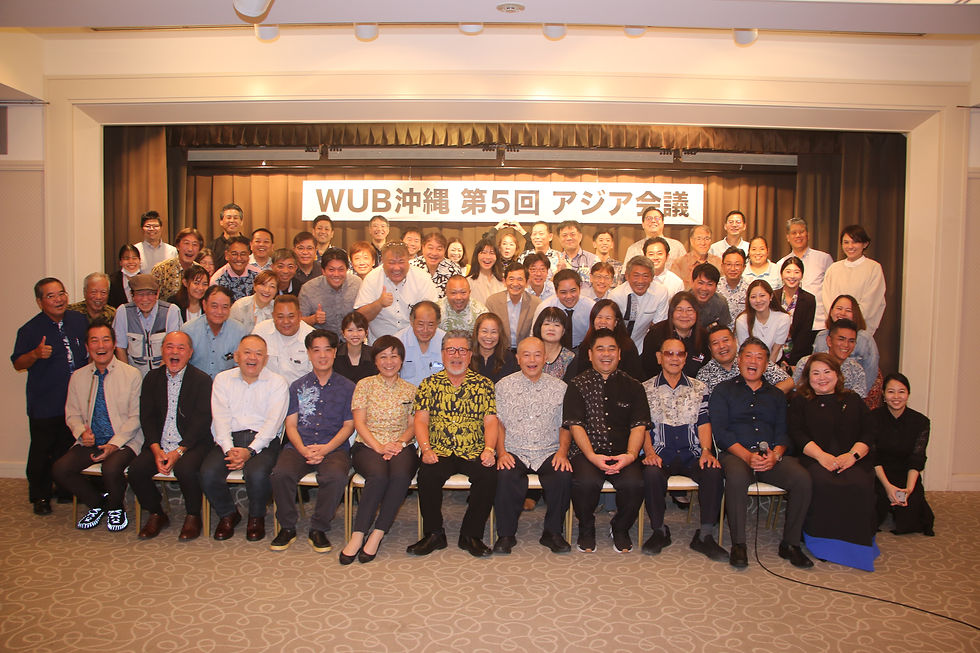スターアドバタイザー(日刊紙)に紹介されました
- wubokinawa0

- 2019年5月9日
- 読了時間: 4分
この記事はスターアドバタイザー(日刊紙)に掲載されたマーシャル諸島からのハワイ州移住者の貧困状況を他のハワイ州の上位14の民族グループと統計的に比較したものです。そのうちの1つが沖縄になります。
ご参考までに、沖縄に関する内容を抜粋しました。
■□■□■□■□■□■□■□■□■□■□■□■□■□■□■□■□■□■□■□■□■
マーシャル諸島からのハワイ州移住者の貧困状況が最新の報告により明らかに
スターアドバタイザー(日刊紙) 2018年3月31日 Kristen Consillio(抜粋)
State Department of Business, Economic Development and Tourism(ハワイ州経済産業観光省)が
島の上位14の民族グループ(沖縄、日本、中国、フィリピンなど)の研究結果を発表した。
・沖縄系移民は、島内に強いネットワークを持ち、貧困率3.2%、失業率3.8%と最も低く、世帯収入の中央値が$87.938、社会経済的幸福度が最も高い。
・住宅保有率はハワイ州は全国で最も低いが(56.9% 全国63.9%)、沖縄県系移民は 77.3%と全国平均を上回った。(本土系移民73/6%、中国系移民64.1%)
・沖縄県系移民の学士大学院学位取得率は41.4%。
統計の結果をハワイ大学社会学部Sun-Ki Chai教授は次のように述べています。
「比較的最近の移住者はしばしば限られたネットワークや地域の社会的支援の欠如の中にある。
社会的システムに適応し仕事を見つけることが困難であり時間を費やすことになる。強固な社会的ネットワークを持つことは、
感情的な幸福だけではなく経済的な幸福にも不可欠である。」
Marshallese in Hawaii struggling with poverty, according to new report
By Kristen Consillio March 31, 2018 Updated March 31, 2018 8:01am
Extreme racial disparities exist among Hawaii’s population, with a growing number of immigrants from the Pacific islands living in poverty.
An estimated 11.2 percent of Hawaii’s 1.4 million residents live in poverty.
Pacific islanders have the highest unemployment rates and among the lowest per capita incomes.
Marshallese are the worst off, with more than half living in poverty and 16.9 percent jobless. The population, with the largest average household size at 16 people, had the lowest median household income at $32,650 and per capita income of $5,963 from 2011 to 2015, according to a report released this week by the state Department of Business, Economic Development and Tourism, which studied the top 14 ethnic groups in the islands.
“For those who are recent immigrants, often the problem is a lack of local social support, including limited networks and opportunity within their own community,” said University of Hawaii sociology professor Sun-Ki Chai. “So they have simply a harder time figuring out how to adjust to the system and find a job. Having a strong social network is crucial to both emotional well-being but also economic well-being. There’s not really a simple solution.”
Marshallese, in particular, have a harder time establishing themselves because of the revocation in the mid-1990s of Medicaid, the government health insurance program for low-income people; food stamps; and other forms of assistance to several countries, including the Marshall Islands, Federated States of Micronesia and Palau, he said.
“Hence migrants are unable to avail themselves of even the normal types of poverty relief that other Hawaii residents can receive,” Chai said.
Meanwhile, Samoans, Guamanians/Chamorros and Tongans also had higher poverty rates, lower homeownership and significantly larger households.
Okinawans, with a strong network here in the islands, are at the top for socioeconomic well-being with the lowest poverty and unemployment rates at 3.2 percent and 3.8 percent, respectively, and highest median household income at $87,938.
“The Filipinos, Japanese, Chinese, Caucasians, they have been well established as a community. Their economic well-being is better in terms of homeownership, in terms of income and in terms of many other economic indicators,” said chief state Economist Eugene Tian. “But other Pacific islanders, they are relatively new in Hawaii, and they are also much younger.”
Native Hawaiians also had higher poverty and lower education rates. Only 16.4 percent of Hawaiians have bachelor’s or graduate degrees, compared with 41.4 percent of Okinawans.
Of the top five largest ethnic groups (white, Filipino, Japanese, Native Hawaiian and Chinese), Filipinos — many of whom tend to live in multigenerational families — have the highest household income, while Native Hawaiians have the lowest. The median household income in Hawaii was $69,515.
“The poverty has something to do with age. Hawaiians are also relatively younger,” Tian said. “Because they’re so young, they haven’t even completed their education yet. They have potential.”
As a whole, the state’s homeownership rates were among the lowest in the nation, with an estimated 56.9 percent of homes occupied by owners, compared with 63.9 percent nationwide. Only three ethnic groups were above the national average in homeownership: Okinawans at 77.3 percent, Japanese at 73.6 percent and Chinese at 64.1 percent.
The report put the median age in the islands at 38. The Japanese had the oldest median age at 43.9 years, while the Marshallese had the youngest at 18.5.
“We have the most diversified culture, work force, and life style among all the states in the nation,” said DBEDT Director Luis Salaveria in a news release. “This gives us an advantage in terms of international trade and tourism by supplying the diversified work force and providing a wide variety of food and cultural activities. At the same time, there are more demand for government and private services, especially in the areas of education and health care.”
The report is based on the latest data available from the U.S. Census Bureau’s 2011-2015 American Community Survey.






コメント